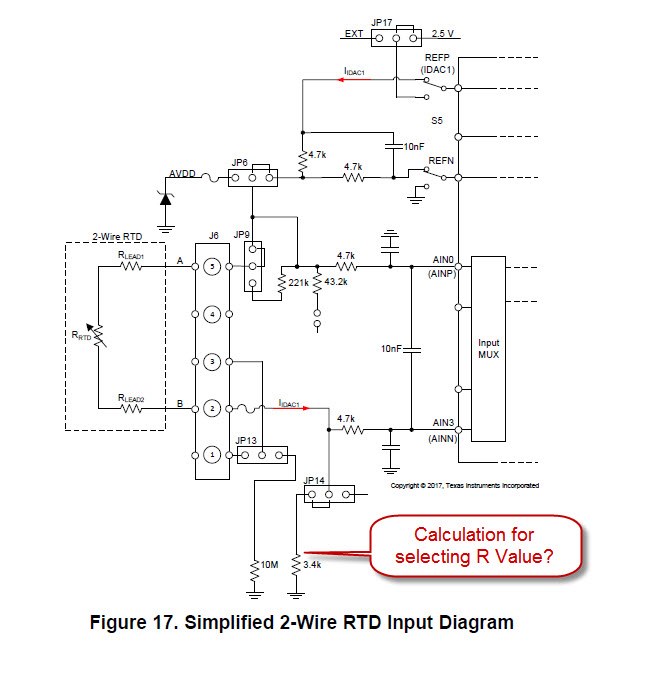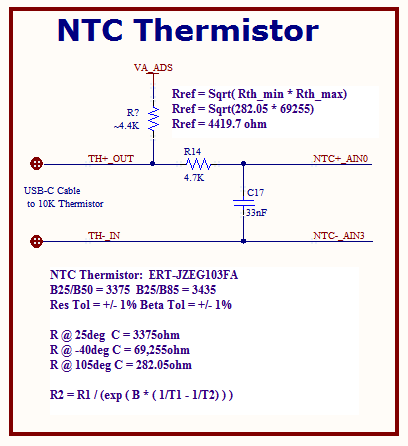Other Parts Discussed in Thread: ADS1220, , ADS124S06, ADS1219
Hello I have a question on the schematic for the ADS122U04 EVM. For the setup for a 2-Wire RTD that is shown below there is a Resistor in the schematic R79 shown below as a 3.4K value resistor. The EVM User Manual indicates that this may need to be changed depending on the iDAC output current and R77 Value(4.7K on the EVM) that creates the VREF voltage. It is not clear how to determine an appropriate value for R79 based on changes that would be made to the IDAC output current and hence updated R77 value to create the desired VREF voltage?
Can someone please assist with the calculation to determine the correct value and also help with the understanding of the purpose of this resistor? The notes in Sect 5.1.1 of the EVM manual indicate R79 is to maintain proper common mode voltage when using the PGA gain but I am not really clear on my understanding of this. I understand what Common-Mode is and the PGA requirements for this.
My specifics are
Using the ADS1220
IDAC = 10 or 50uA depending on our specific NTC Thermistor
AVDD = 3.3V though may need to bump this up higher to accomodate IDAC compliance.
Any insight would be very helpful and welcomed...
Regards,
Frank




